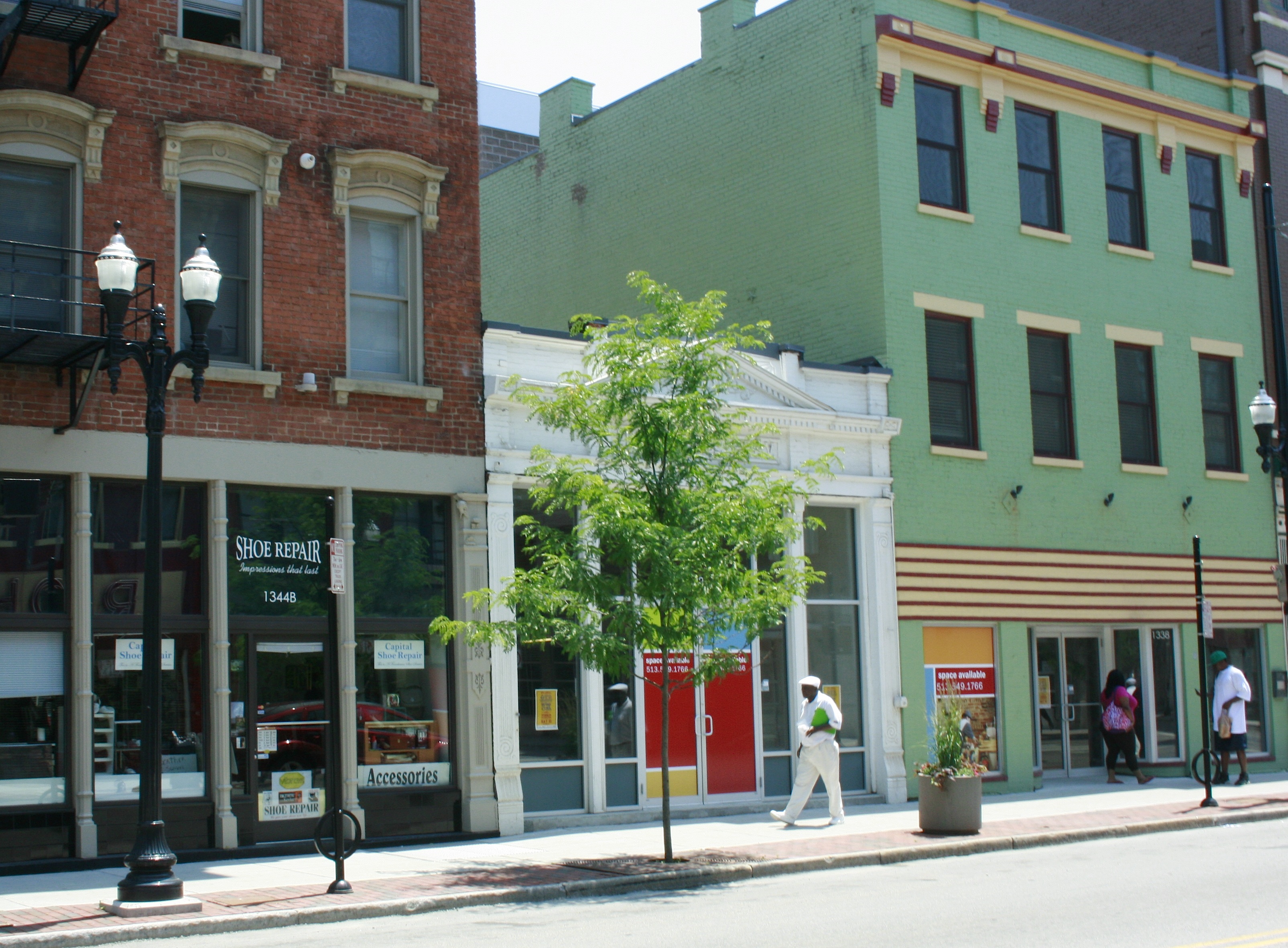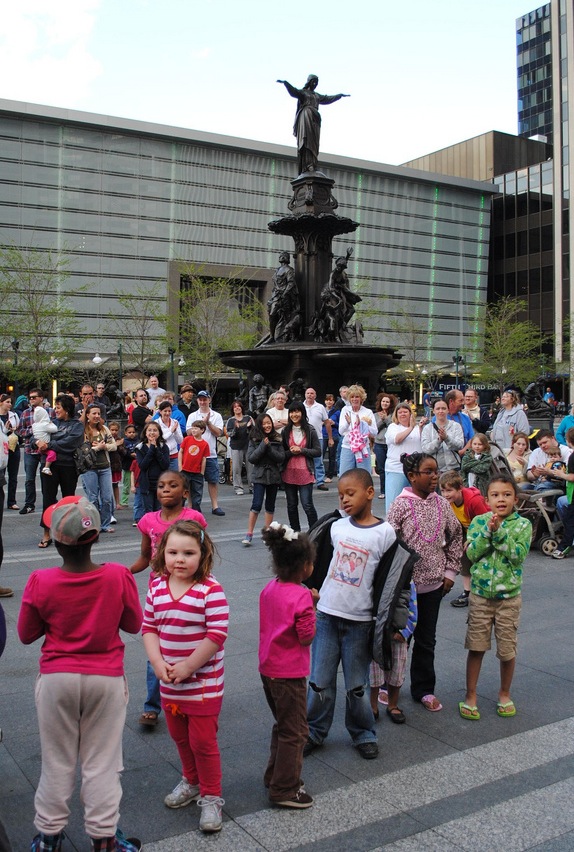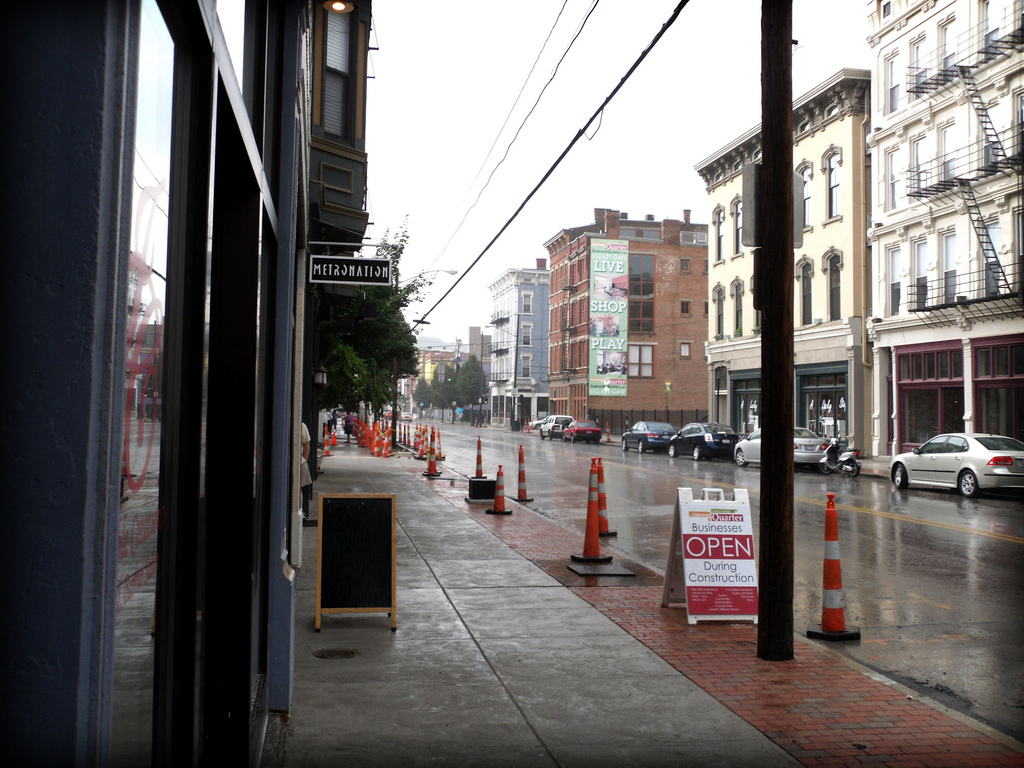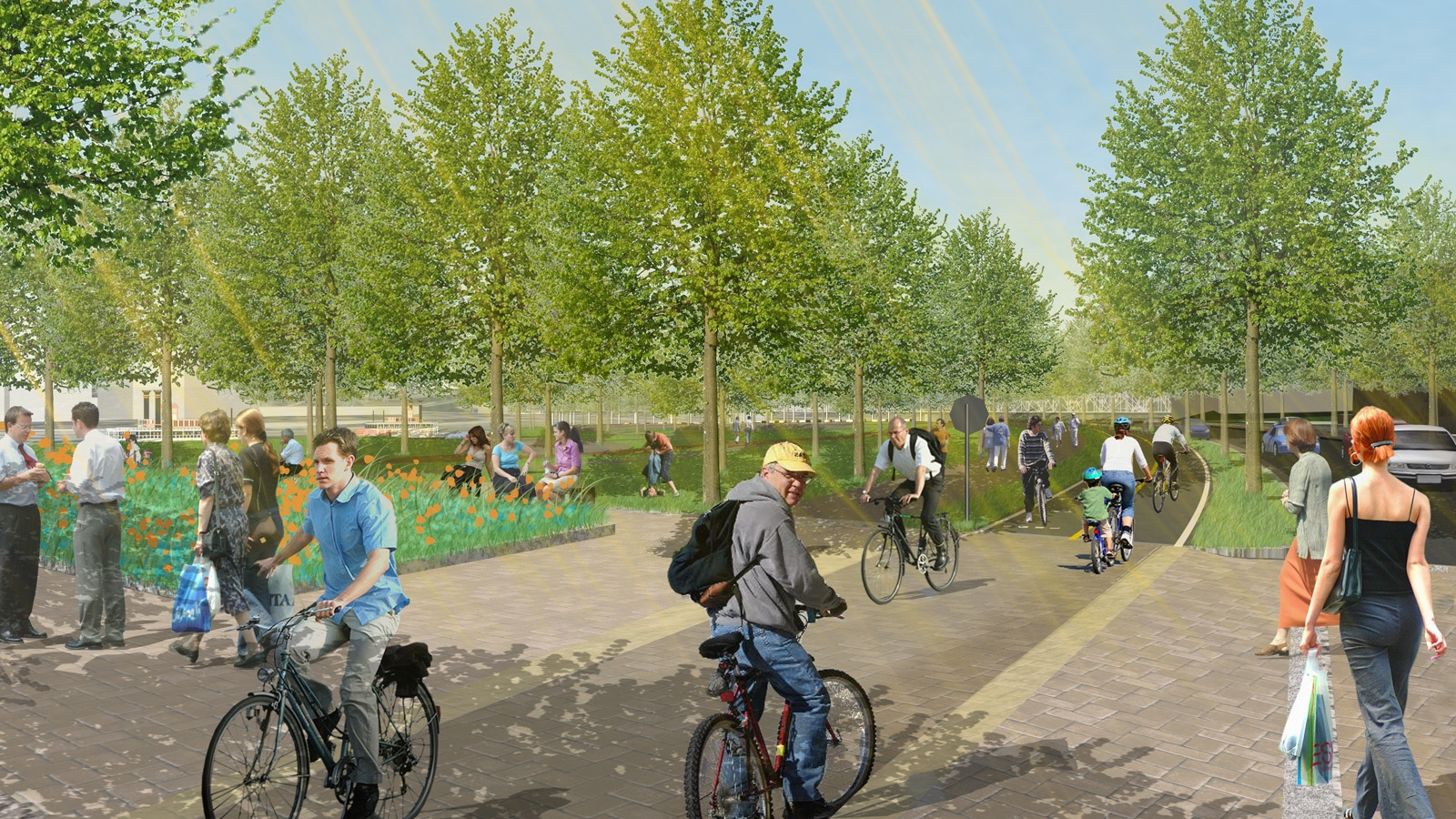Worn footwear, busted purses and torn leather car interiors will live to see another day, thanks to leather extraordinaire and soul musician James Napier and Capital Shoe Repair & Shine Parlors.
Though believed by many to have gone the way of the milkman or the service station attendant, there is strong evidence to the contrary at 1344 Vine Street. Business is good, the door is open and Napier can’t finish a sentence without returning a wave to someone on the street, signifying Capital is in good company. “The neighborhood is great,” said Napier.
The Northside native was in the market to open a second location to supplement the original Capital Shoe Repair downtown and decided on the Vine Street location after a friend insisted he take a drive through Over-the-Rhine.

Capital Shoe Repair [LEFT] in the Gateway Quarter of historic Over-the-Rhine. Photograph by Jenny Kessler for UrbanCincy.
“I hadn’t even considered Vine a possibility. I had been on the road playing music for three years and when I came home I was surprised to see the neighborhood had come such a long way,” he said.
Napier has traveled all over the Midwest promoting his other passion: soul music. He’s been playing piano and guitar almost as long as he’s been in the shoe repair business – almost.
Capital opened in October 2010, but Napier’s been honing his craft for 37 years. His father, Frenchman Napier, opened Frenchman’s Shoe Repair of Covington, Kentucky in 1969, and laid the foundation for a family tradition.
“My first experience was at my father’s shop. I was fourteen years old and he had left to run some errands and put me in charge. Up until this point I had never operated any of the machines, my father thought I was too young. As soon as he left, I went to the Good Will next door and bought a small, decorative metal shoe and took it back to the shop. I used a scrap of leather and the trimming machine to put a sole and a heel on it,” said Napier.
Napier reached under the counter and showed the metal shoe with a flawless sole and heel attached; his first work, the passing of the shoe. “When he came back I showed him what I had done, he was impressed,” he added.
Impressed indeed. Two businesses and eight soul albums later, James Napier has still got it. He now divides his time equally between the original Capital Shoe Repair on 221 E. 4th Street (8am to 1pm) and the new Over-the-Rhine location (1pm to 8pm) and will mend anything from shoes to baseball gloves – just drop bye and say hello.







